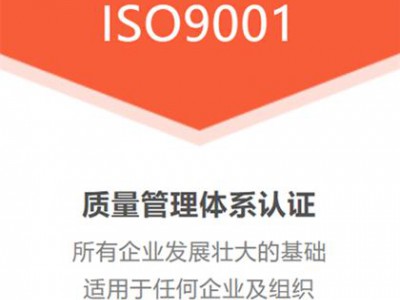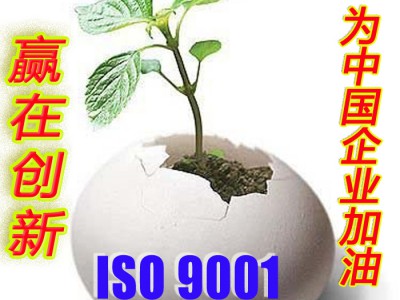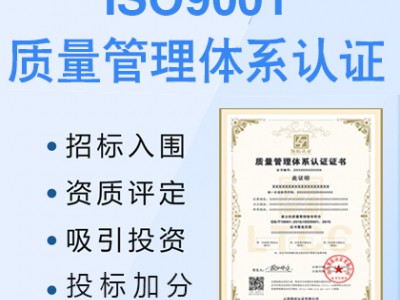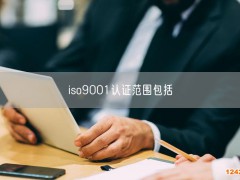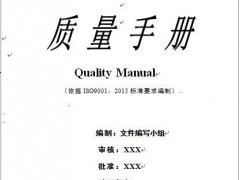ISO9001:2008標準常見問題的回答
FAQs on ISO 9001:2008
常見問題的回答
This list of Frequently Asked Questions (FAQs) has been prepared by ISO/TC 176/SC 2 to support the publication of ISO 9001:2008 and the revision of ISO 9004. Input has been obtained from experts and users of the ISO 9000 standards, expressed during seminars and presentations around the world.
本常見問題的回答是由ISO/TC 176/SC2編寫的,目的是為了支持:ISO 9001:2008的頒布和ISO 9004的修改。這些問題都是ISO 9000系列標準的使用者和專家們在各種討論會議中以及全世界各地提出來的,
The list will be reviewed and updated on a regular basis to maintain its accuracy, and to include new questions where appropriate. It is intended that this list will also provide a good source of information for new users of the standards.
這些常見問題的回答將會定期加以評審,確保其準確性,同時,會相應增加一些新的問題。其意圖還想給一些新的標準使用者提供一些良好的信息資源。
For the latest version of the FAQs, reference should be made to the open access web site at www.iso.org/tc176/sc2.
最新版本的常見問題的回答可以從公開網站的下列網址得到。
1. What is ISO? 什么是ISO ?
The International Organization for Standardization (ISO) was established in 1947 and is (currently) an association of approximately 157 members, which each represent their own country. ISO employs a system of Technical Committees, Sub-committees and Working Groups to develop International Standards. Besides the National Standards Bodies, ISO permits other international organizations that develop standards to participate in its work, by accepting them as Liaison members. ISO works in accordance with an agreed set of rules of procedure, the ISO/IEC Directives, which also include requirements on the presentation of standards.
國際標準化組織(ISO)是1947年建立的,目前大約有157個成員組成的協會,每個成員代表一個國家。ISO 應用一個技術委員會系統,下面還有份委員會和工作組來開發國際標準。除了國家標準化組織外,ISO 還容許其他開發標準的各種國際組織,通過聯絡成員的身份參與工作。國際標準化組織按照一系列協商一致的程序規則進行工作的,其中包括ISO/IEC 指令有關提出各種標準的各項要求。
2. Who are the National Standards Bodies, and who represents my country at ISO?
誰是我們國家的標準化組織代表國家參加ISO?
Please see the relevant page on ISO online that gives details, including contact information, of the National Standards Bodies.
有關誰代表您們國家參加國際標準化組織的問題,請查閱國際標準化組織網站,在那里您能得到詳細的信息,包括您們國家標準化組織的名稱和誰接觸的信息。
3. What are the ISO 9000 standards ? 什么是ISO 9000系列標準?
The ISO 9000 standards are a collection of formal International Standards, Technical Specifications, Technical Reports, Handbooks and web based documents on Quality Management. There are approximately 25 documents in the collection altogether, with new or revised documents being developed on an ongoing basis.
(It should be noted that many of the International Standards in the ISO 9000 family are numbered in the ISO 10000 range.)
4. Who is responsible for developing the ISO 9000 standards? 誰負責開發ISO 9000系列標準?
ISO Technical Committee (TC) number 176 (ISO/TC 176), and its Sub-committees, are responsible for the development of the standards. The work is conducted on the basis of "consensus" among quality and industry experts nominated by the National Standards Bodies, representing a wide range of interested parties.
5. Where can copies of the standards be obtained? 我可以從哪里得到標準的文件?
Copies of the standards may be purchased from your National Standards Body (see list with contact details), or from ISO Central Secretariat through the ISO Store of by contacting the Marketing and Communication department (sales@iso.org). Many National Standards Bodies have them available in local-language versions.
6. Where can copies of the supporting ISO 9000 guidance notes or other documents be found ?
從哪里可以得到支持ISO9000 標準的指導文件或者其他有關文件?
Copies of the ISO 9000 Introduction and Support Package modules:
Guidance on ISO 9001:2008 Sub-clause 1.2 ’Application’
Guidance on the documentation Requirements of ISO 9001:2008
Guidance on the Terminology used in ISO 9001 and ISO 9004
Guidance on the Concept and Use of the Process Approach for management systems
Guidance on ’Outsourced Processes’
as well as details of the Quality Management Principles can be found at: www.iso.org/tc176/sc2
Copies of the ISO 9001 Auditing Practices Group guidance notes.
Copies of the sanctioned ISO/TC 176 sanctioned “Interpretations” of ISO 9001 can be found at: http://www.tc176.org/
7. Where can information be obtained on the ISO 9000 standards?
從哪里可以得到有關ISO9000系列標準信息?
There are a number of sources of information on the ISO 9000 quality management system standards, including ISO’s web site (www.iso.org), which carry information on the standards. Your National Standards Body should be able to provide copies of the standards, and registrars/certification bodies will be able to provide guidance on registration arrangements.
8. Why are the standards being revised?
為什么ISO9000系列標準在不斷修改的?
ISO’s formal review process:
Requires continual review to keep standards up to date. Must be initiated within 3 years of publication of a standard.
User inputs from:
A global user questionnaire/survey
A market Justification Study
Suggestions arising from the interpretation process
Opportunities for increased compatibility with ISO 14001
The need for greater clarity, ease of use, and improved translation
Current trends:
Keeping up with recent developments in management system practices.
9. Who is responsible for revising the standards?
誰負責修改ISO9000 系列標準的?
The revision process is the responsibility of ISO Technical Committee no.176, Sub-committee no.2 (ISO/TC 176/SC 2) and is conducted on the basis of consensus among quality and industry experts nominated by ISO Member bodies, and representing all interested parties.
10. When will the revised standards be available?
什么時候能得到修改好的標準?
The revised quality management system standards (ISO 9000, 9001 and 9004) are scheduled as follows:
ISO 9000:2005 already published – no major changes expected for 2009
Current plan is for small changes to ISO 9001 (an “amendment”) to be published in November 2008.
More significant changes are planned for ISO 9004 (a “revision”) to be published in mid 2009.
ISO 9000:2005已經在2005年修改好了。估計2009年不會有大的修改了;
ISO 90001:2008已經修改好11月15日出版了。只是做一些小的補充修改而已;
ISO 9004有大的變動,預期2009年出版。
11. How much is the implementation of the new standard going to cost?
貫徹新版標準將會花去多少費用?
One of the goals of ISO/TC 176/SC 2 is to produce standards that will minimize any potential costs during a smooth implementation. Any additional costs may be considered as a value-adding investment. A key factor in the development of ISO 9001:2008 was to limit the impact of changes on users.
在開發ISO 90001:2008標準的時候有一個關鍵因素就是要限制更改對標準使用者帶來的影響。
12. Where can I obtain information on the revised standards?
我從哪里可以得到有關修改好標準的信息?
See the ISO Catalogue on ISO online web site that carries general information on the revision program. Your National Standards Body will give you additional information and the certification/registration bodies will be able to provide guidance on transitional arrangements in due course.
可以從ISO 的網站分類中得到有關標準修改一般的信息;
從您們國家的標準化組織那里可以得到一些附加的信息;
認證機構到時候會指導您如何過渡的具體安排?
13. Where can my organization go if it needs additional clarification or interpretation of the ISO 9001:2008 standard?
如果我想了解更加詳細的有關ISO9001:2008標準的說明和詮釋的話,我應當找誰?
The starting point for any individual request for an interpretation should be with the enquirer’s National Standards Body. ISO Central Secretariat and ISO/TC 176/SC 2 cannot accept direct requests from individuals for interpretations of the ISO 9000 standards. ISO/TC 176 has a Working Group that only accepts formal requests for interpretations from the National Standards Bodies. The agreed interpretations can be found at http://www.tc176.org/.
任何個人對標準的理解有問題應當向國家的標準化機構咨詢。ISO秘書處和ISO/TC176委員會的SC2工作組不會接受個人提出的有關ISO 9000系列標準的任何問題。ISO/TC176委員會有一個工作組只接受您們國家標準化組織用統一表單提出的問題。統一作出解答,公布在下列網站上: http://www.tc176.org/.
14. Will my organization need a full reassessment once the revised standards are available?
當修改后標準頒布后,我們是否必須對自己的體系重新做一次審核?
This is primarily an issue between your organization and your registration/certification body. ISO/TC 176 is working with the IAF (International Accreditation Forum) and ISO/CASCO (the ISO Policy Committee for Conformity Assessment) in order to provide relevant information in a timely manner. ISO/CASCO is responsible for the standards to which the Certification Bodies work (ISO/IEC 17021), and the Accreditation Bodies are responsible for monitoring and approving the performance of Certification Bodies within their geographical area.
這是您們和認證機構之間的一個基本問題。ISO和IAF(國際認可論壇)已經協商一致,公布了一個過渡時間的公報?ISO/CASCO負責編寫認證工作標準(ISO/IEC 17021),認可機構負責監視和批準該認可機構管轄范圍內的認證機構來執行。
It is expected that conformity to the new ISO 9001:2008 standard will be evaluated by certification bodies during regular surveillance visits and that full reassessment will only take place once current certificates expire. However, it should be noted that ISO and the IAF have agreed that all certificates to ISO 9001 should be upgraded to ISO 9001:2008 within 2 years of publication of the amended standard.
希望認證機構能結合定期的監督審核來評估對新版標準ISO9001:2008的符合性,只有當現有證書到期換證審核的時候,會做全面的重新評估。但是,要注意到,ISO和IAF的過渡公報中規定,ISO9001:2008頒布后24個月以內ISO 9001:2000版證書必須升版。
15. Will the revised standards be available in my national language immediately after they are published by ISO?
我們國家語言的修改后標準是否能馬上得到?
The active participation of experts from around the world in the preparation of the new standards, and the broad distribution of the draft standards, will facilitate the timely translation of the International Standards.
全世界各個國家的專家都積極參加標準修改,國際標準化組織的起草標準的工作委員會會幫助把國際標準很快翻譯過渡的。
Given the global importance of the quality management system standards, many National Standards Bodies are already working on the translation issue. ISO itself will publish the new standards in English and French, but if national language translations of the standards are currently available from your National Standards Body, we expect that they will have the translation of the revised standards ready at the time of publication by ISO or very soon thereafter.
鑒于質量管理體系系列標準對全世界的重要性,很多國家標準化組織已經開始在做翻譯工作了。國際標準化組織只頒布英文和法文版本,如果您們從您們國家標準化組織那里已經得到您們國家文字的標準的話,我們希望這個翻譯本只能同時或者等ISO標準正式頒布后盡快頒布。
For further details contact your National Standards Body.
更具體的情況請和您們國家標準化組織聯系。
16. Will my organization have to re-write all its documentation?
我們的體系文件必須重新寫嗎?
No. ISO 9001:2008 doesn’t introduce major changes to the requirements, when compared to ISO 9001:2000. However, to benefit from the changes, we suggest you get acquainted with the new version of the standard and the clarifications introduced. If, during your analysis of the clarifications you find there are differences from your current interpretation of ISO 9001:2000, then you should analyse the impact on your current documentation and make the necessary arrangements to update it. It is intended that the amendment of ISO 9001 will have minimal or no impacts on documentation.
不需要。ISO9001:2008相對2000版對體系的要求沒有引進大的變更。但是,利用這次變更我們建議您們取得新版標準,看看有哪些問題得到澄清了。通過分析,如果發現您們現在對2000版標準的理解和ISO9001:2008澄清的有所不同,那么,就要分析一下對您們現在的文件有沒有影響,如果有影響,那么做一個必要的安排,把文件修改一下。標準修訂的時候,其意圖將會對文件有少量或者沒有任何影響。
17. Will the revised standards address financial issues?
修改后的標準是否會涉及到財務問題?
Financial issues are not addressed in ISO 9001:2008, which is a requirements standard.
有關財務的各種問題不包括在ISO9001:2008標準中,標準只提出要求。
The ISO 10014:2006 and ISO 9004:2000, Guidelines for performance improvements standards will emphasize the financial resources needed for the implementation and improvement of a quality management system.
標準ISO 100014:2006和ISO9004:2000質量管理體系改進的指導標準這兩份國際標準強調執行和改進質量管理體系所必要的各種財務資源。
18. What are the benefits of the revised standards?
標準修改會帶來什么好處?
For ISO 9001:2008 the major benefits are:
對ISO9001:2008,主要的好處是:
Simple to use 使用簡單
Clear in language 語言簡潔
Readily translatable and easily understandable 容易翻譯和理解
Compatibility with other management systems such as ISO 14001.和其他管理體系兼容,譬如和 ISO 14001環境管理體系兼容
For ISO 9004:
對ISO9004主要的好處是:
Facilitates improvement in users’ quality management systems.
Provides guidance to an organization for the creation of a quality management system that:
- creates value for its customers, via the products it provides
- creates value for all other interested parties
- balances all interested-party viewpoints.
Provides guidance for managers on leading their organization towards sustained success.
Forward compatibility to allow organizations to build on existing quality management systems.
便于ISO9000系列標準使用者改進他們的質量管理體系。
指導組織創建一個符合下列要求的質量管理體系:
= 通過向他們的顧客提供各種產品,為他們的顧客創造價值;
= 為其他利益相關方創造價值;
= 平衡各個利益相關方的各種觀點。
指導管理者如何領導組織向著維持成功。
讓各個組織在現有質量管理體系的基礎上向著和諧前進。
19. What are the main changes in ISO 9001:2008?
ISO9001:2008的主要更改是什么?
ISO 9001:2008 has been developed in order to introduce clarifications to the existing requirements of ISO 9001:2000 and changes that are intended to improve compatibility with ISO 14001:2004. ISO 9001:2008 does not introduce additional requirements nor does it change the intent of the ISO 9001:2000 standard.
ISO9001:2008標準主要是對現有ISO9001:2000標準做一些解釋,有些更改只是為了改進和ISO 14001:2004的兼容。ISO9001:2008沒有提出新的要求,也沒有改變ISO9001:2000標準的意圖。
Certification to ISO 9001:2008 is not an “upgrade”, and organizations that are certified to ISO 9001:2000 should be afforded the same status as those who have already received a new certificate to ISO 9001:2008
相對ISO9001:2008不是一個“升版”的問題,已經通過ISO9001:2000認證的組織和通過新版ISO9001:2008認證是等同效果的。
All changes between ISO 9001:2000 and ISO 9001:2008 are detailed in Annex B to ISO 9001:2008.
ISO9001:2008相對ISO9001:2000有哪些詳細的變更,可以參考ISO9001:2008的附錄B。
20. What are the main benefits to be derived from implementing an ISO 9000 quality management system?
貫徹執行ISO9000系列標準將會帶來什么主要的好處?
The ISO 9000 standards give organizations an opportunity to increase value to their activities and to improve their performance continually, by focusing on their major processes. The standards place great emphasis on making quality management systems closer to the processes of organizations and on continual improvement. As a result, they direct users to the achievement of business results, including the satisfaction of customers and other interested parties.
貫徹執行ISO9000系列標準能給組織提高他們作業的價值的機會,讓他們關注主要的各種過程,可以持續改進他們的工作業績。這個系列特別標準強調讓質量管理體系關注組織的各個過程,并且持續改進這些過程。這樣做的結果,會讓采用這些標準的組織取得商務上的成就,其中包括,讓各類顧客和其他各個利益相關方的滿意。
The management of an organization should be able to view the adoption of the quality management system standards as a profitable business investment, not just as a required certification issue.
組織的管理者應看到,采用質量管理體系各種標準是一種能為他們取得回報的商務投資,而不僅僅是為了取得一份證書而已。
Among the perceived benefits of using the standards are:
貫徹執行ISO9000系列標準能取得好處是:
The connection of quality management systems to organizational processes 把各個質量管理體系和組織的各個過程聯系起來了
The encouragement of a natural progression towards improved organizational performance, via: 通過以下方式促使組織自然向著持續改進業績的方向前進:
- the use of the Quality Management Principles采用質量管理八個原則
- the adoption of a "process approach"采用“過程模式”系統管理
- emphasis of the role of top management強調最高管理者的作用
- requirements for the establishment of measurable objectives at relevant functions and levels各個相關職能和層次建立可測量的目標的要求
- being orientated toward "continual improvement" and "customer satisfaction", including the monitoring of information on "customer satisfaction" as a measure of system performance.堅持“持續改進”和“顧客滿意”的方向,包括把監視“顧客滿意”的信息作為對體系性能的一種測量方法
- measurement of the quality management system, processes, and product使對質量管理體系、各個過程和產品的測量
- consideration of statutory and regulatory requirements.對法令和法規各項要求的考慮
- attention to resource availability關注資源的可獲得性
21. How will the implementation of the amended standard help my organization to improve its efficiency?
組織如何利用貫徹修改后標準來幫助提高我們的效率?
ISO 9001:2008 aims at guaranteeing the effectiveness (but not necessarily the efficiency) of the organization. For improved organizational efficiency, however, the best results can be obtained by using ISO 9004 in addition to ISO 9001:2008. The guiding quality management principles are intended to assist an organization in continual improvement, which should lead to efficiencies throughout the organization.
ISO9001:2008的目的是確保組織的有效性(而效率不是必須)。至于改進組織的效率,最好是利用在貫徹ISO9001:2008標準的同時,貫徹標準ISO9004:2000。貫徹執行質量管理八個原則就是為了幫助組織持續改進的,它將使整個組織引向效率的提高。
22. What benefits are there to an organization implementing ISO 9004 ?
組織貫徹執行ISO9004:2000將會帶來什么好處?
If a quality management system is appropriately implemented, utilizing the eight Quality Management Principles, and in accordance with ISO 9004, all of an organization’s interested parties should benefit. For example:
假如組織組的質量管理體系中恰當地貫徹質量管理八原則,同時又用ISO9004,將會使整個組織的各個利益相關方得益。例如:
Customers and users will benefit by receiving the products (see ISO 9000:2005, Fundamentals and vocabulary) that are:
顧客和產品使用者通過接受產品而得到好處:(有關術語見ISO9000:2005)
Conforming to the requirements 符合各項要求;
Dependable and reliable 可信性和可靠性
Available when needed 需要時就能得到(可用性)
Maintainable 可維護性
People in the organization will benefit by:
組織的員工將得到好處:
Better working conditions 更好的工作環境
Increased job satisfaction 提高工作的滿意度
Improved health and safety改進健康和安全
Improved morale 提高士氣
Improved stability of employment 提高員工的穩定性
Owners and investors will benefit by:
老板和投資者將得到好處:
Increased return on investment 提高投資回報率
Improved operational results 提高營運結果
Increased market share 提高市場份額
Increased profits 提高利潤率
Suppliers and partners will benefit by:
供方和合伙者將得到好處:
Stability 穩定性
Growth 成長率
Partnership and mutual understanding 合作和雙方的理解
Society will benefit by:
社會將得到好處:
Fulfilment of legal and regulatory requirements法令和法規得到貫徹
Improved health and safety 提高健康和安全
Reduced environmental impact 降低對環境的影響
Increased security 提高治安
23. Are the standards compatible with national quality award criteria?
系列標準是否和國家質量獎的準則兼容?
The standards are based on 8 Quality Management Principles, which are aligned with the philosophy and objectives of most quality award programs. These principles are:
系列標準在質量管理八原則基礎上提出來的,這些原則和大多數質量獎的哲理和目標是一致的。這八個原則是:
Customer focus, 顧客為中心
Leadership, 領導
Involvement of people, 員工參與
Process approach, 過程模式
System approach to management,系統管理
Continual improvement, 持續改進
Factual approach to decision making, and根據事實做決定 ,和
Mutually beneficial supplier relationships. 供需互利
ISO 9004 recommends that organizations perform self-assessments as part of their management of systems and processes, and includes an annex giving guidance on this approach. This is similar to many quality awards programmes.
對環ISO9004要求組織執行自我評估作為他們的質量管理體系體系以及各個過程中的一部分,標準還包括附錄來指導如何進行自我評估。這是和很多質量獎方案的做法是類似的。
24. Why is the requirement for monitoring "customer satisfaction" included in ISO 9001?
為什么ISO9001標準要規定對“顧客滿意”的監視要求?
"Customer satisfaction" is recognized as one of the driving criteria for any organization. In order to evaluate if a product meets customer needs and expectations, it is necessary to monitor the extent of customer satisfaction. Improvements can be made by taking action to address any identified issues and concerns.
“顧客滿意”是任何組織為了評估他們的產品是否滿足顧客需求和期望而推導出來的一種判別準則。它對監視顧客滿意程度來說是必須要有的。對這方面的改進可以針對任何已經識別出來的問題或者關注點來采取措施。
25. Can the standards improve "customer satisfaction"?
這些系列標準能改進“顧客滿意”嗎?
The quality management system details that are described in the standards are based on Quality Management Principles that include the "process approach" and "customer focus". The adoption of these principles should provide customers with a higher level of confidence that products will meet their needs and increase their satisfaction.
系列標準中所描寫的質量管理體系細節要求都是根據質量管理八個原則提出來的,其中包括“過程模式”和“顧客關注點”這兩個原則。采用這些管理原則應當向顧客提供較高水平的信心,使人相信他們提供的產品將滿足他們的需求,提高他們的滿意。
26. What is meant by "continual improvement"?
“持續改進”是指什么意思?
Continual improvement is the process focused on continually increasing the effectiveness and/or efficiency of the organization to fulfil its policies and objectives. Continual improvement (where "continual" highlights that an improvement process requires progressive consolidation steps) responds to the growing needs and expectations of the customers and ensures a dynamic evolution of the quality management system.
“持續改進”是關注持續提高組織的有效性和/或效率以便實現組織的方針和目標的工作過程。持續改進(中的“持續”強調改進過程要求有積極進取的一步一步的考慮)是針對容易提高的顧客需求和期望以及為了確保對質量管理體系有一動態的進化。
27. What is a process?
什么是過程?
Any activity or operation, which receives inputs and converts them to outputs, can be considered as a process. Almost all activities and operations involved in generating a product or providing a service are processes.
For organizations to function, they have to define and manage numerous inter-linked processes. Often the output from one process will directly form the input into the next process. The systematic identification and management of the various processes employed within an organization, and particularly the interactions between such processes, may be referred to as the ‘process approach’ to management.
For further information, refer to the paper Guidance on the Concept and Use of the Process Approach, available from www.iso.org/tc176/sc2.
28. What is the "process approach"?
什么是過程模式?
The "process approach" is a way of obtaining a desired result, by managing activities and related resources as a process. The "process approach" is a key element of the ISO 9000 standards. For further guidance, please refer to the ISO 9000 Introduction and Support Package module: Guidance on the Concept and Use of the Process Approach for management systems.
29. Can the "process approach" be applied to other management systems?
其他管理體系可以采用過程模式嗎?
Yes. The "process approach" is a generic management principle, which can enhance an organization’s effectiveness and efficiency in achieving defined objectives.
可以的。“過程模式”是通用的管理原則,組織利用它可以在達到規定目標方面提高有效性和效率。
30. How can the PDCA cycle be used in the "process approach"?
如何在“過程模式”中使用PDCA?
The PDCA cycle is an established, logical, method that can be used to improve a process.
This requires:
(P) planning (what to do and how to do it),
(D) executing the plan (do what was planned),
(C) checking the results (did things happened according to plan) and
(A) act to improve the process (how to improve next time).
The PDCA cycle can be applied within an individual process, or across a group of processes.
31. Can any organization apply the "process approach"?
是否任何組織都可以采用“過程模式”?
Yes. Many organizations already apply a "process approach" without recognizing it. They could achieve additional benefits by understanding and controlling it.
是的。很多組織雖然自己還不知道,實際上已經采用了“過程模式”。如果他們理解了而且對這些過程加以控制好的話,還能得到更多的好處。
32. Why should an organization apply the "process approach"?
為什么組織應當采用“過程模式”?
By applying the "process approach" an organization should be able to obtain the following types of benefits:
組織采用“過程模式”應當能獲得下列類型的好處:
The integration and alignment of its processes to enable the achievement of its planned results.
An ability to focus effort on process effectiveness and efficiency.
An increase in the confidence of customers and other interested parties as to the consistent performance of the organization.
Transparency of operations within the organization.
Lower costs and shorter cycle times through effective and efficient use of resources.
Improved, consistent and predictable results.
The identification of opportunities for focused and prioritized improvement initiatives.
The encouragement and involvement of people, and the clarification of their responsibilities.
The elimination of barriers between different functional units and the unification of their focus to the objectives of the organization.
Improved management of process interfaces.
33. What is meant by the “sequence” of processes and their "interactions"?
過程的“順序”和“相互作用”是指什么意思?
The "sequence" of processes shows how the processes follow, or link, to each other to result in a final output.
通過過程和過程的順序可以見到各個過程中每個過程相互之間的銜接,或者說連接,導致最后的輸出結果。
For example, the output from one process may become the input of the next process or processes.
舉例說,某一個過程的輸出可能是下一個過程,或者幾個過程的輸入。
The "interactions" show how each process affects or influences one or more of the other processes. For example, the monitoring or controlling of a process may be established in a separate process.
“相互作用”是表示每個過程是如何影響或者讓其他一個或者幾個過程產生結果的。舉例說,對某一過程的監視或者控制活動可能是靠另外一個過程來執行的。
34.How can the processes in an organization be determined?
如何確定組織中各種過程?
Identify the organization’s intended outputs, and the processes needed for achieving them. These will need to include processes for Management, Resources, Realization and Measurement and Improvement.
先認定組織有哪些意向的輸出,為了得到這些輸出,必須要有哪些過程。這些過程中有可能包括管理過程、資源過程、產品實現過程和測量和改進過程。
Identify all process inputs and outputs, along with the suppliers and customers, who may be internal or external.
Identify the sequence and interactions of the processes.
識別所有過程的輸入是什么,輸出是什么,同時識別各個供方和顧客,可能是內部和或者外部的。
35.Should an organization define and document all its processes?
組織是否應當定義所有的過程,并且加以文件化?
The main purpose of documentation is to enable the consistent and stable operation of an organization’s processes.
文件化的主要目的是確保組織中各個過程能穩定的操作,而且確保一致性
Although statutory, standards’ or customer requirements may require certain documentation, there is no defined “catalogue”, or list of processes that has to be documented in ISO 9001, apart from the 6 indicated ones.
盡管法令、標準、或者顧客的各種要求有可能要有某些文件。但是,ISO 9001標準中,除了指定有六個必須文件化的以外,沒有規定,哪“類”過程,或者哪些清單中的過程必須形成文件。
The organization should determine which processes are to be documented on the basis of:
組織應當自己根據以下方面來確定哪些過程必須文件化:
The size of the organization and type of its activities, 組織的規模以及他們作業的類型。
The complexity of its processes and their interactions,他們過程的復雜性以及這些過程的相互作用。
The criticality of the processes and 這些過程的重要性,以及
Availability of competent personnel.作具有勝任能力人員的可獲得情況
A number of different methods can be used to document processes, such as graphical representations, written instructions, checklists, flow charts, visual media, or electronic methods.
可以采用很多種不同的方法來對過程加以文件化,諸如,用圖形來表示、書寫作業指導書、檢查單、流程圖、目視媒介,或者電子方式。
36.How much detail is required in process documentation?
過程文件化的詳細程度有什么要求?
The extent of detail is likely to depend upon factors such as:
詳細的程度可能取決于以下各個因素,諸如:
the size of an organisation and its types of activities, 組織的規模以及他們作業的類型。
the complexity of its processes and their interactions, and 他們過程的復雜性以及這些過程的相互作用。
the competence (level of education, training, skills and experience) of its personnel.他們的員工在(教育文化程度、培訓、各種技能和經驗)決定的勝任能力。
37. Is there a standard way of describing a process?
描述過程的途徑,是否有標準的方法?
No, there is no standard way to describe a process. It depends on the culture, management style, staff literacy, personal attributes and their interactions.
沒有標準的描述過程的方法。這取決于文化、管理的風格、工作人員的寫讀能力、人員的歸屬和他們的相互作用。
A process may be described using a flow chart, block diagram, responsibility matrix, written procedures or pictures.
也許可以用流程圖、方框圖、職責矩陣、書面的程序或圖形來描述。
Process flowcharts or block diagrams can show how policies, objectives, influential factors, job functions, activities, material, equipment, resources, information, people and decision making interact and/or interrelate in a logical order.
各種流程圖或者方框圖可以從邏輯順序來說明方針、目標、各種影響因素、崗位職能、各種作業、材料、設備、資源、信息、人員和做決定的相互作用和/或者相互關系。
38.What should an organization do to adopt the "process approach"?
采用“過程模式”的組織應當做什么?
To adopt the "process approach" an organization should apply the following steps:
采用“過程模式”的組織應當應用如下各個步驟:
Identify the processes of the organization, 確定組織的各個過程。
Plan the processes, 對這些過程加以策劃。
Implement and measure the processes,執行和測量這些過程。
Analyse the processes, 分析這些過程。
Improve the processes.改進這些過程。
39. What is a "process owner"?
什么叫過程主管?
A person who is given the responsibility and authority for managing a particular process is sometimes referred to as the "process owner".
It may be useful for an organization’s Management to appoint individual "process owners" and to define their roles and responsibilities; these should include the responsibility for ensuring the implementation, maintenance and improvement of their specific process and its interactions.
It should be noted, however, that ISO 9001:2008 does not specifically require the appointment of "process owners".
40.How can a process be measured?
過程如何加以測量的?
There are various methods of measuring process controls and process performance, ranging from simple monitoring systems up to sophisticated statistically based systems (e.g. statistical process control, or SPC, systems). The selection and use of any particular method will be dependent on the nature and complexity of an organization’s processes and products. The effectiveness of an individual process may be measured by the conformity of its output or product to customer requirements. Its efficiency may be measured from its use of resources. In all cases the measurement of the process determines if its (measurable) objectives have been achieved. Sometimes it only requires monitoring to confirm process operations.
對過程各種控制和過程性能的測量有各種各樣的方法,從簡單的對系統進行監視到復雜的統計為基礎的各種系統(也就是統計過程控制,或者叫SPC、系統的)。針對某特定方法的選擇和應用取決于組織的過程和產品的本質和復雜性。針對某個過程,可以通過對過程輸出的符合性,或者產品相對顧客各項要求的符合性的來測量它的有效性。在所有的情況下,通過過程的測量來確定過程的(可測量的)目標已經達到。有時候,只要求對過程加以監視,符合過程的操作要求就可以了。
Typical factors that are useful to consider when identifying measures of process control and process performance include:
當識別過程控制的測量以及過程性能測量的時候,考慮以下這些典型的因素是很有用的:
Conformity with requirements, 對要求的符合性。
Customer satisfaction, 顧客滿意。
Supplier performance, 供方的業績
On time delivery, 及時交付
Lead times, 預定時間
Failure rates, 失效率
Waste, 廢品率
Process costs.過程各種成本
Incident frequency 事故發生頻率
中企檢測認證網提供iso體系認證機構查詢,檢驗檢測、認證認可、資質資格、計量校準、知識產權貫標一站式行業企業服務平臺。中企檢測認證網為檢測行業相關檢驗、檢測、認證、計量、校準機構,儀器設備、耗材、配件、試劑、標準品供應商,法規咨詢、標準服務、實驗室軟件提供商提供包括品牌宣傳、產品展示、技術交流、新品推薦等全方位推廣服務。這個問題就給大家解答到這里了,如還需要了解更多專業性問題可以撥打中企檢測認證網在線客服13550333441。為您提供全面檢測、認證、商標、專利、知識產權、版權法律法規知識資訊,包括商標注冊、食品檢測、第三方檢測機構、網絡信息技術檢測、環境檢測、管理體系認證、服務體系認證、產品認證、版權登記、專利申請、知識產權、檢測法、認證標準等信息,中企檢測認證網為檢測認證商標專利從業者提供多種檢測、認證、知識產權、版權、商標、專利的轉讓代理查詢法律法規,咨詢輔導等知識。
本文內容整合網站:百度百科、搜狗百科、360百科、知乎、市場監督總局 、國家認證認可監督管理委員會、質量認證中心
免責聲明:本文部分內容根據網絡信息整理,文章版權歸原作者所有。向原作者致敬!發布旨在積善利他,如涉及作品內容、版權和其它問題,請跟我們聯系刪除并致歉!



